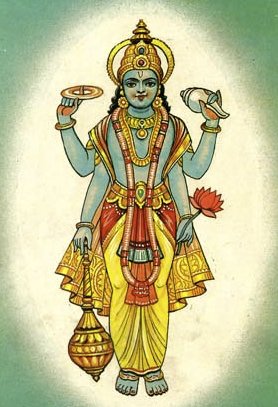Siddhavata, Siddhavaṭa: 4 definitions
Introduction:
Siddhavata means something in Hinduism, Sanskrit, Marathi. If you want to know the exact meaning, history, etymology or English translation of this term then check out the descriptions on this page. Add your comment or reference to a book if you want to contribute to this summary article.
In Hinduism
Vaishnavism (Vaishava dharma)
Source: Prabhupada Books: Sri Caitanya CaritamrtaSiddhavaṭa (सिद्धवट).—According to Śrī Caitanya Caritāmṛta, Madya-lila 9.17, “After seeing the Ahovala-nṛsiṃha Deity, Caitanya Mahāprabhu offered many prayers unto the Lord. He then went to Siddhavaṭa, where He saw the Deity of Rāmacandra, the Lord of Sītādevī”. Siddhavaṭa, also known as Sidhauṭa, is ten miles east of the village Kuḍāpā. Previously this place was also known as southern Benares. There is a great banyan tree there, and it is therefore known as Siddhavaṭa. Vaṭa means banyan tree.

Vaishnava (वैष्णव, vaiṣṇava) or vaishnavism (vaiṣṇavism) represents a tradition of Hinduism worshipping Vishnu as the supreme Lord. Similar to the Shaktism and Shaivism traditions, Vaishnavism also developed as an individual movement, famous for its exposition of the dashavatara (‘ten avatars of Vishnu’).
Languages of India and abroad
Marathi-English dictionary
Source: DDSA: The Molesworth Marathi and English Dictionarysiddhavaṭa (सिद्धवट).—m (Poetry.) The name of a tree which confers siddhi (some supernatural faculty, adeptness in magic, alchymy &c., or absorption into Brahm). Ex. siddhavaṭaparyanta bhāradvājēṃ || bōḷavilā raghunātha ||; also tyā siddhavaṭā sāvitrīsampūrṇa || sītā dēkhūna navasa karī ||.
Marathi is an Indo-European language having over 70 million native speakers people in (predominantly) Maharashtra India. Marathi, like many other Indo-Aryan languages, evolved from early forms of Prakrit, which itself is a subset of Sanskrit, one of the most ancient languages of the world.
Sanskrit dictionary
Source: Cologne Digital Sanskrit Dictionaries: Monier-Williams Sanskrit-English DictionarySiddhavaṭa (सिद्धवट):—[=siddha-vaṭa] [from siddha > sidh] m. Name of a place, [Catalogue(s)]
[Sanskrit to German]
Sanskrit, also spelled संस्कृतम् (saṃskṛtam), is an ancient language of India commonly seen as the grandmother of the Indo-European language family (even English!). Closely allied with Prakrit and Pali, Sanskrit is more exhaustive in both grammar and terms and has the most extensive collection of literature in the world, greatly surpassing its sister-languages Greek and Latin.
See also (Relevant definitions)
Partial matches: Siddha, Vata.
Starts with: Siddhavataka, Siddhavatam, Siddhavatarana, Siddhavatasthalakalpa.
Full-text: Siddhavatasthalakalpa, Siddhavati, Cittavatam, Trivikrama.
Relevant text
Search found 3 books and stories containing Siddhavata, Siddhavaṭa, Siddha-vata, Siddha-vaṭa; (plurals include: Siddhavatas, Siddhavaṭas, vatas, vaṭas). You can also click to the full overview containing English textual excerpts. Below are direct links for the most relevant articles:
The Skanda Purana (by G. V. Tagare)
Chapter 36 - Description of the Five Liṅgas Concluded < [Section 2 - Kaumārikā-khaṇḍa]
Chapter 198 - The Greatness of Śūleśvara Tīrtha < [Section 3 - Revā-khaṇḍa]
Chapter 2 - A List of Different Sacred Places of Śiva on the Earth < [Section 3b - Arunācala-khaṇḍa (Uttarārdha)]
The Padma Purana (by N.A. Deshpande)
Chapter 11 - A list of sacred places (tīrtha) < [Section 1 - Sṛṣṭi-khaṇḍa (section on creation)]
The Linga Purana (by J. L. Shastri)
Chapter 92 - Glory of Śrīśaila < [Section 1 - Uttarabhāga]